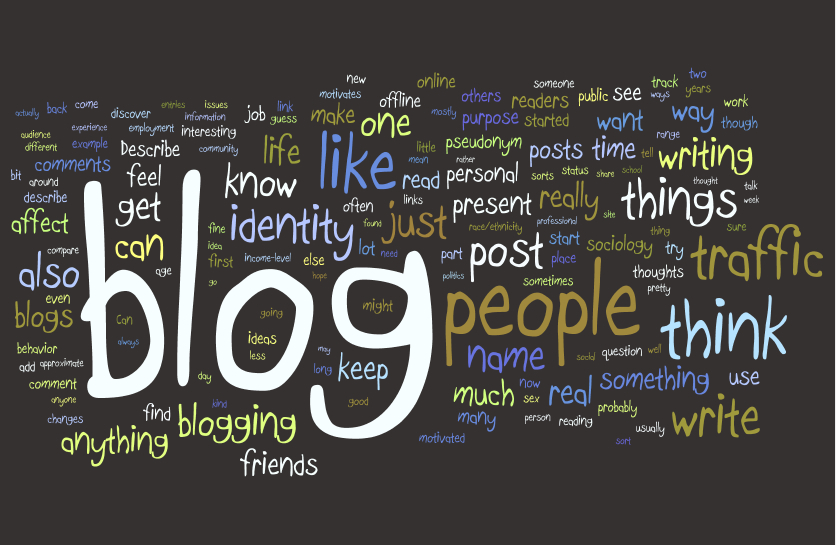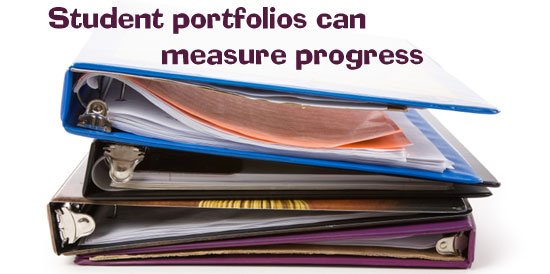Sobbing teacher memes are popping up like raindrops on water while school supplies barricade the front of every store. It must be THAT time. THAT which shall not be named. I try really, really, really (no, like REALLY) hard to ignore the start of school. School lets out at the end of May, and before June even peeks its head out, family and friends ask me the one question I attempt to artfully evade: when do you go back to school?
Some readers will already know that my response is usually along the lines of "sometime in August." It's nearing the end of July, and I've received district and building back-to-school letters. I've been thinking about school--cleaning/moving classrooms, reading professional development texts, building my PLN on Twitter, designing lesson plans in my head, reflecting on past practices--all summer long. Now is where the fun starts!
The beginning of the year brings bubbling excitement, nerves on fire, and, admittedly, a little bit of depression for summer days gone by. It also brings pressure for me to hunker down and organize: syllabus, classroom blog, welcome letter, and climate building activities.
Syllabus
My syllabus is where I want to lay everything out for my students. It tells both students and their families how my classroom is run, including how they will be graded, what specific rules they must follow, and other routines. I choose to put my syllabus into a handy Google Form so students can follow along as we review the syllabus in class, and then they can go home, access the form with their parents, fill it out, and submit it. Doing this puts all of my students' information (including their email addresses) and their parents' information (again, including their email addresses) into one Google Sheet so that I can access it later. Then, when I go to send out a parent welcome email, voila! All their emails, right there. Copy the column with email addresses, and it's done. It's like magic!
Here's a link to the form I use. PLEASE do me a solid. Don't edit this form. If you'd like to, ahem, steal it, go to "file" and then "make a copy" so that others can enjoy the original form, as well.
Here's another tip. When you make a copy, immediately click on the folder icon and place the copy where you'd like it to go in your Drive account. Likewise, click on "view responses" and do the same for your spreadsheet. Otherwise, your new handy syllabus may float in Google oblivion for infinity.
Here's a look at the spreadsheet. Just don't forget to change the location or you might lose it later.
Having set up my syllabus in Google Forms for both semesters last year, I find it the easiest and most efficient way to collect information. Of course, a bonus to having my syllabus as e-copies is having an empty drawer where I used to store 150 copies of this baby. Of course, now that drawer is filled with k-cups. Happiness!
Note: I struggled with whether or not I wanted to go to an electronic "signed" form. How do I know that parents are the ones who are filling it out and not students? I finally became content with the idea when a coworker said, "well, how do we know that their parents are the ones filling out the actual paper ones?" Good point. Whether hard copy or e-copy, we don't 100% know that these forms are being filled out by a student's guardian. If a parent returns later and says they never saw the syllabus and never filled out the form, that is a conversation the parent should have with his/her student about honesty.
Classroom Blog
My students will be utilizing a blog (it's a work in progress!) to complete a variety of activities this year to reflect on learning and track their discoveries during their 20% time. I have decided to use Blogspot since it fits in so nicely with the GAFE community. I'm excited to see how my students learn throughout the year and how they affect global audiences through their learning. In order to prepare for the beginning of the year, I need to get a few things set up on the blog. First, I need to add a label widget so that students can easily categorize their posts (by their class period) and so that they are easily organized.
Assuming you have already set up your blog, click on "layout" from the left navigation bar.
You can choose where you would like your layouts to show up. I chose the top layout bar (tip: you can also customize this layout by choosing "template" from the left navigation bar) because once students start adding labels for the class period they are in, each label will show up at the top to be easily accessed. Click on "add a gadget".
Next, find the "labels" gadget. Click the plus button to add it, review the settings on the next screen, and you're done.
You can add as many gadgets to your page as you'd like. I have also chosen to add a gadget that tracks page views and one that tracks where visitors to our blog are from. This gives students some ownership and they like to see the impact they are having. To add my flag gadget, I went to flagcounter.com, changed settings accordingly, and copied the script it spit out at me. Then, I added it as a gadget.
Step 1: Add gadget
Step 2: Choose the html gadget. In the next screen, copy the script into the box and you're done.
I've also added a "favorites" gadget to the blog. I'd like students' blog postings to be highlighted here to give them some ownership and pride in the work they are doing.
Each year, I write students a welcome letter that I share with them on the first day of class. The letter includes information about me, my summer, and my classroom. This is my first point of contact with students, so I open myself up to the so they see me as a person and I can begin building rapport with them right away. On the back of the letter, I ask students to write me a letter in return. Here, I ask them to do as I've done: tell me something about you and open yourself up to me. I plan to post this letter on the blog as a start to the year, but I'll still write and print out the letter using a chisel and tablets...errr...paper. I like to give students a run down of tech expectations before they get their hands on the Chromebooks in my room, and they always get the letter as a "warm-up" on the first day of class when we have 20(ish) minute class periods. After I collect and read them, I write a note or two on each and hand it back to them the next day.
Climate Building
I can't tell you how many times I have played around with climate building. In my eight years of teaching, I have spent weeks on team building activities one year, and the next year, I spent one measly day. Team building may seem like fluff as I once thought myself, but here's the truth: students. don't. know. each. other. Not only that, but they don't know me. How can they feel comfortable sharing their writing and taking risks if they don't know anyone in the room? At first, my 9th students came from only two schools. The majority came from the middle school in town and 5% or so came from the charter academy in town. With the addition of a second middle school, they come from three different places. Not only that, but the biggest population of transfer students are those who are in the 9th grade. Again. They. Don't. Know. Each. Other. I have to help them get to know one another. Here are a few of my favorites.
- Use Google Slides to create a class directory of your students. Set up the slideshow with the number of students in your class plus three extra slides. On the first slide, do a welcome message. On slide number two, write the instructions: take a picture of yourself using the Chromebook, add your name, tell me a book you love and a book you don't love, and tell me a random fact about you. On the third slide, model the instructions using your own information. My students have fun doing this--as well as photobombing each other as they take their photos to include.
- Set up an assignment where students create a slideshow about themselves. Jackie Gerstein has a fabulous website with many community building activities on it, one of which is this slideshow activity. Head there to see more ideas!
- Play name games. And then play them some more. We like to play games with a tennis ball or squishy toys you can buy at the dollar store. Start with one ball and ask students to get in a circle (P.S: This activity is tech-free). Student 1 (or the teacher) starts off throwing the ball across the circle to someone else, saying their name as he does. Student 2 repeats this, throwing to someone else who is not on either side of him. Once a student has the ball once, he/she puts his/her hands behind his back. He may not have the ball again. Once all students have had the ball, it returns to student 1. Now, repeat the activity in the same order, asking students to move as quickly as possible. Once they have that down, throw in another ball and get two going at once. Then, for fun, thrown in a third. It gets crazy, but it's definitely fun!
- Find Someone Who....and fill in the blank. This is almost like a scavenger hunt, or you can make it like BINGO. This is typically played on printed sheets of paper. OOOOO...LIGHT BULB! Mix this with your technology. Ask students to create either the class directory or slideshow about themselves (as above). Then, glance through their slides after class and pick out some noteworthy things about them. Put these into a paper BINGO board, and ask students to flip through the directory to find the different items and identify the student it matches. When a student gets five in a row, an X, or a frame (your choice), have them say "BINGO!" What does he or she get? In my class, it's usually a stick of gum or a few Tic Tacs. Yeah, I'm classy like that.
- World Cafe (tech free): place desks in quads. One student will be the recorder in the group (they choose who that is) and another student will be the speaker. The teacher will show a question, and students have 30 seconds to ponder their answer without talking. This is the hardest part for them. If anyone talks, the time gets extended. When played at the beginning of the year, this is a great way for you to gauge how well your class listens. After 30 seconds, give students about 2 minutes to discuss their answers to the questions while the recorder writes them down. After that amount of time, the speaker from each group reports out their answers. Next, instruct all students except the recorder in each group to stand up. Those standing must now find a new group to sit with and may not travel with those they just sat with. Those who stayed in the group as the recorder now become the speaker and a new recorder is chosen. Repeat this process with four more questions. Start easy with the questions (What did you do over the summer?) and progress to more thought provoking questions (Describe a person or place that has deeply impacted you).
There are many, many other ways to build climate in your room, but these are a few to start. I really, really enjoy doing a combination of both tech-related activities and paper activities. This gives students the variety they need and keeps them on their toes. Furthermore, it allows my students to move around the room so they aren't stagnant in their seats for 90 minutes. Students need to move to get their thoughts flowing!
What other ways do you build a positive and nurturing climate in your classroom (w/ or w/o tech)? How else do you get the school year started? Tell me in the comments below!














